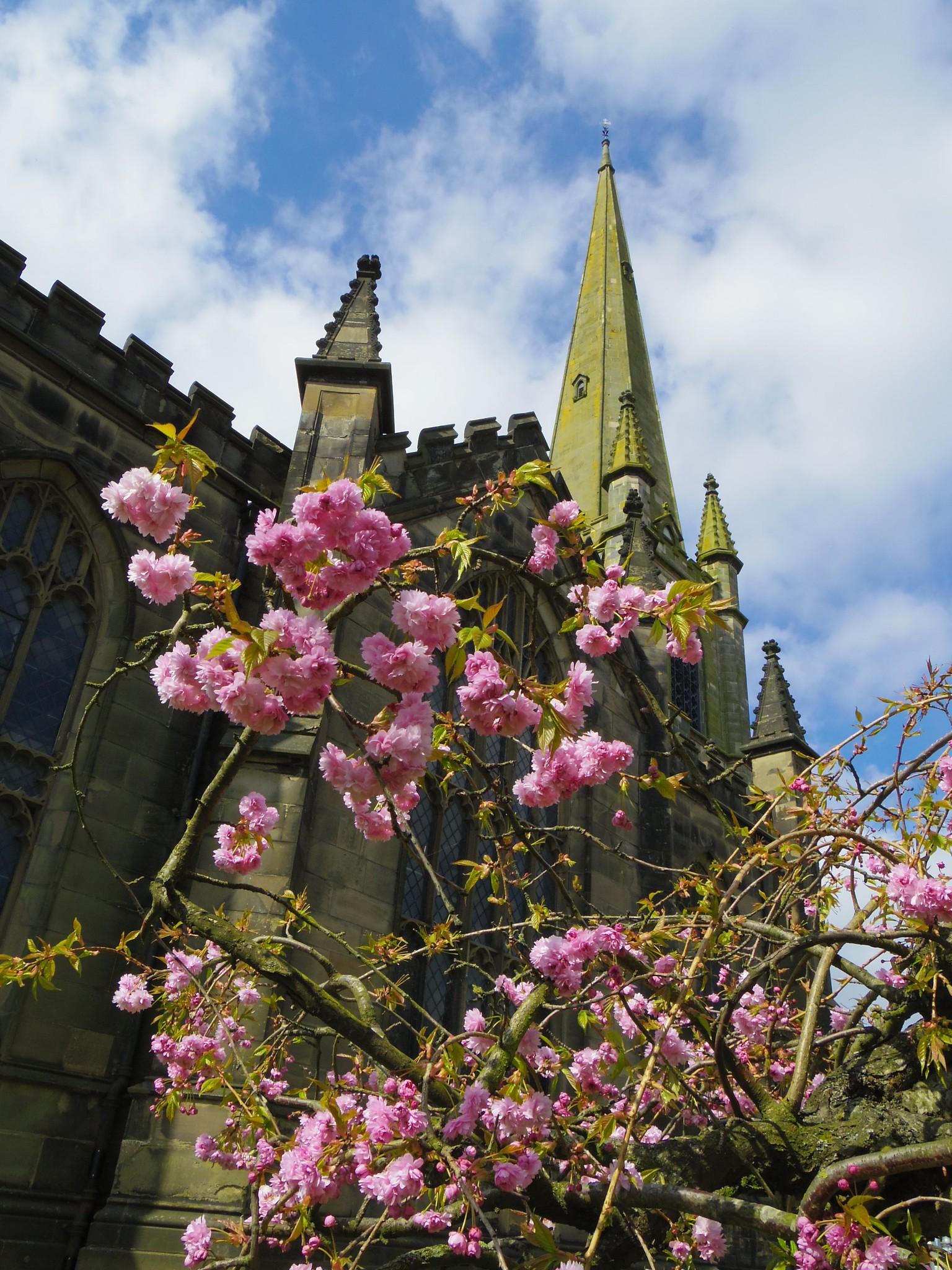St Edmund King & Martyr
Dudley, West Midlands
On a site of Christian worship for over a thousand years, the present building (1724) was rebuilt after an altercation in 1646 between the King's men and the Parliamentarians.

Built in 1818, an ambitious pioneer work by the architect William Brooks built in neo Gothic style, with the only window by esteemed glass painter Joseph Backler known to have survived.
Dudley, West Midlands
The present Georgian church was built in the Gothic Revival style on the site of its demolished predecessor between 1815 and 1818 to designs by the architect William Brooks. Its structure is a product of the industrial revolution, evidenced in its cast iron skeleton of pillars, roof members and window tracery.
At 200m above sea level, the church has been a landmark for the residents of Dudley since it was founded and frequently appears in photographic and artistic representations of the town. One of the most significant features of 'top church' is the east window, which is a very rare surviving example of the 18th century genre of painted stained glass. It is the only known window by esteemed glass painter Joseph Backler to have survived.

Dudley, West Midlands
On a site of Christian worship for over a thousand years, the present building (1724) was rebuilt after an altercation in 1646 between the King's men and the Parliamentarians.
West Bromwich, West Midlands
This Grade II listed building is the oldest church in the centre of West Bromwich.
Stourbridge, West Midlands
St Thomas is a Georgian church added to by the Victorians, known for its arched barrel ceiling and the Holy Ghost plaque.